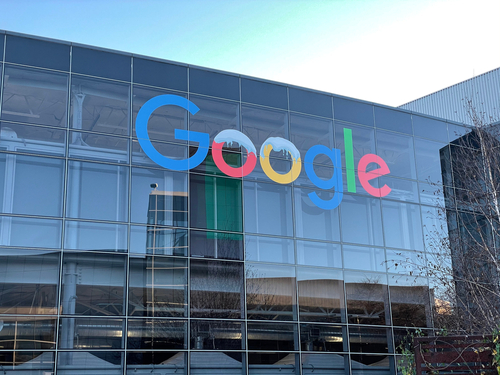

Summary
- The communications index of the S&P 500 had a great run until last year, outperforming the market by 57%, thanks to Alphabet (GOOG) and Meta (META).
- However, it has been the second-worst performer in 2022, due both to collapsing highfliers and poor performance by old-line telecom, cable and media companies.
- The communications sector looks cheap now based on several measures. The highfliers now trade at reasonable P/E ratios and have solid business models.
This article is only available to Macro Hive subscribers. Sign-up to receive world-class macro analysis with a daily curated newsletter, podcast, original content from award-winning researchers, cross market strategy, equity insights, trade ideas, crypto flow frameworks, academic paper summaries, explanation and analysis of market-moving events, community investor chat room, and more.
Summary
- The communications index of the S&P 500 had a great run until last year, outperforming the market by 57%, thanks to Alphabet (GOOG) and Meta (META).
- However, it has been the second-worst performer in 2022, due both to collapsing highfliers and poor performance by old-line telecom, cable and media companies.
- The communications sector looks cheap now based on several measures. The highfliers now trade at reasonable P/E ratios and have solid business models.
Market Implications
- Aggressive investors should consider investing in GOOG and META and thereby capture most of the sector’s potential upside.
- We move communications from underweight to marketweight on expectations it will perform roughly in line with the SPX.
- Given the negative sentiment toward FANG-type companies, the sector will likely continue to be volatile.
Introduction
The communications sector (IXC) of the S&P 500 (SPX) is a bit of an oddball. [1] Home to some of the glitziest companies in the world – think Alphabet (GOOG), META (META), Netflix (NFLX) – it also houses a collection of old-line telecom, cable and media companies (Appendix details constituent companies). [2]
Over the past decade, the communications sector has had a great run (Chart 1a). Between May 2012 (when Facebook went public) and yearend 2019, it outperformed the SPX by 57%. However, since the market bottom in March 2020, the communications sector only managed perform roughly in line with the SPX through the pandemic rally. Since then, it has been the second-worst performer year to date, underperforming the SPX by 7.8 percentage points (Chart 1b). Only the consumer discretionary sector has been worse.

GOOG and META Drive the Rally…
GOOG and META drove almost all of the huge rally in IXC. At the peak in 2021, GOOG was 41% and META was 20% of the index. Netflix accounted for an additional 6% but added little incremental return to the sector. Those shares are now 44%, 14%, and 2.4%, respectively – yes, GOOG gained at the expense of its fellow highfliers.
…But Cannot Escape the Old Economy
What of the other third of the index – the old-line companies? For most of the decade, they tracked the SPX as a group. But when the pandemic rally really got going after the 2020 election, they flatlined, then fell 30%. The SPX is still up 15.5% versus yearend 2019, just before the pandemic; these companies are down 15.5%.
Many have tried to remake themselves as new-economy companies with varying degrees of success. One notable recent example was AT&T’s (T) decision to sell its cable and streaming assets to Warner Brothers Discovery (WBD) earlier this year. And media companies have struggled to adapt their advertising-driven model in the face of relentless digital competition from GOOG and META. Overall, Mr Market has clearly been unimpressed.
Communications Is Cheap…But Good Value?
Given the degree of underperformance, the IYC index appears relatively cheap relative to the SPX. It is about 20% below our forward EPS- implied index level, after being overvalued by 20% in mid-2021.

Other measures tell a similar story. The price/earnings ratio for the sector has traded roughly in line with the SPX P/E ratio for the past several years. But it is now about 90% of the SPX level on a forward earnings basis (Chart 3). And the IXC forward free cashflow yield has jumped to 5.7% versus 4.8% for the SPX, well above the norm of recent years (Chart 4). On a trailing earnings basis, the IXC sector appears even cheaper relative to the SPX – IXC trailing P/E is 80% of the SPX, and the trailing free cashflow yield is 2.6 percentage points above the SPX.

Fundamentals Support Move to Marketweight
Based on fundamentals, we see a good case to move communications from underweight to marketweight. Excess valuations have been beaten down to reasonable levels. The IXC index trades at a discount to the SPX by historical standards. The highfliers now sport reasonable or even modest forward P/E ratios (Table 1). Keep in mind, these companies have proven business models and generate profits. GOOG and META have generous free cashflow yields. NFLX could see subscription renewals pick up if surging inflation means people must cut back on eating out and opt for staycations.

Whether the old-line companies as a group represent value is beyond our scope here. It appears any valuation premium from hopes more of them could transition into new-economy companies is gone. We do not expect them as a group to significantly outperform the SPX.
The question really is this: should an investor hold the IXC index via the XLC ETF or simply invest in GOOG and META, and perhaps NFLX? Even if P/E valuations rise little, these companies have far higher profit margins than the broader index. And they will likely generate most of the potential earnings growth and upside of the communications sector over time.
We caution that, given the negative sentiment toward FANG-type companies, adding to XLC or GOOG/META positions will likely be volatile for now.


[1] The Bloomberg ticker for the communications sector of the S&P 500 is IXC. This is a market-cap weighted index. The XLC ETF tracks this index.
[2] META was formerly Facebook (FB).
